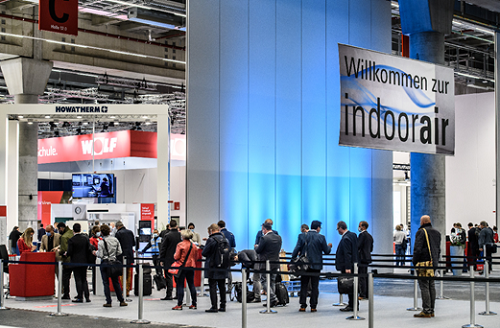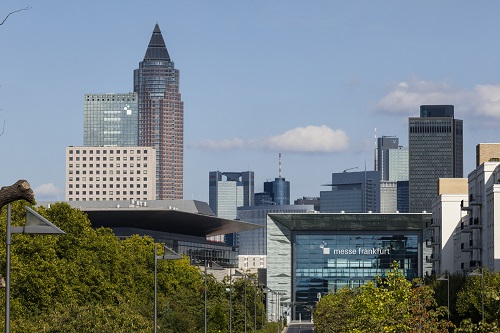|
|||
| Industry News | <Search <Archives <eBulletin Next> | ||
April 12, 2022 Joint study confirms safety of air quality in trade fair halls Over the past two years, it has been virtually impossible to hold trade fairs, even though many exhibition halls in Germany have sophisticated ventilation systems in place. The health authorities operated on the assumption that, when people breathe, they emit potentially virus-infected aerosols in the same way they emit CO2 and that this would lead to widespread infections with SARS-CoV-2. This is why events in publicly accessible areas were not permitted to take place at first. The technical equipment and ventilation systems in our trade fair halls were not factored into the equation, even though the risk of infection can be reduced significantly through ventilation and air purification. A study conducted by Messe Frankfurt – together with a team of researchers from the Institute of Building and Indoor Climate Technology, E.ON Energy Research Centre, RWTH Aachen and Heinz Trox Wissenschaft gGmbH – examined the level of air contamination in typical trade fair halls and determined whether the air quality constituted a hygiene risk. The study was conducted in the second half of 2021. Under the direction of Prof. Dirk Müller, contamination levels were measured at three trade fairs, Indoor-Air, Formnext and Food Ingredients (Fi) Europe,– held in Halls 3 and 12 at Messe Frankfurt. As Uwe Behm, Member of the Executive Board of Messe Frankfurt, explained: “These new study results show that there was good air circulation in all of the halls under examination and at all three events, without any recognisable pockets of uncirculated air. The concentrations of CO2 at the individual measurement points varied only very marginally from those in the exhaust ducts, meaning that the mix of air is virtually ideal.” The measurements were taken in the supply air and exhaust ducts of the ventilation systems and with an additional 22 sensors in continuous operation during the events. These were positioned at visitor head height on columns, near aisles and stands, and in areas adjacent to the halls. The concentration of CO2 was taken as an indicator for the contamination of indoor air. This is because aerosols – which have been a key indicator in the pandemic and can be potentially infected with viruses – are emitted through breathing in the same way as CO2. The aim should be not to exceed a CO2 level of 1,000 ppm (parts per million). CO2 concentrations above 2,000 ppm are considered hygienically unaccaptable. All CO2 concentrations measured were consistently well under 1,000 ppm – in some cases, they were just over 400 ppm, which is almost on a par with outdoor air quality. With a maximum level of 835 ppm on the day with the highest number of visitors, it was also demonstrated that the fresh air volumes specified by Messe Frankfurt were sufficient to guarantee good and hygienically safe air quality on all days of the event. This means that, with additional safety and hygiene measures in place, it is possible to hold trade fairs safely even during a pandemic. When combined with further measures from an approved hygiene concept, there is no reason from a ventilation perspective why trade fairs should not be held. However, the air quality can and should be monitored continually by measuring the concentration of CO2 in the air. (Source: Messe Frankfurt) Link to study https://doi.org/10.18154/RWTH-2022-01845   Frankfurt am Main |
|
Copyright © Building.hk All rights reserved.
|
